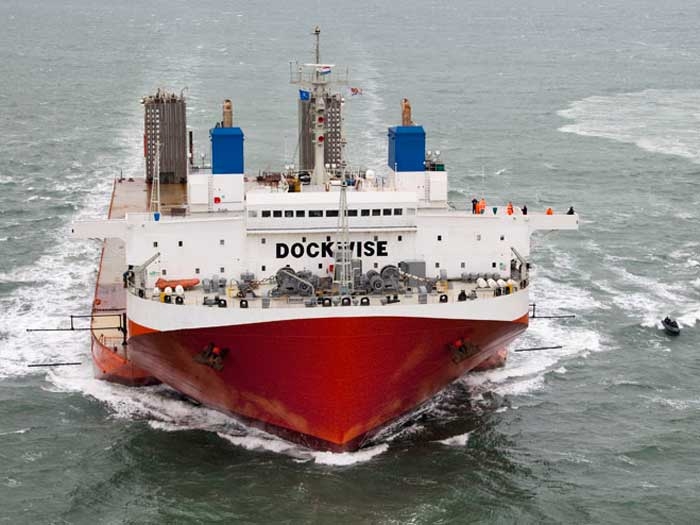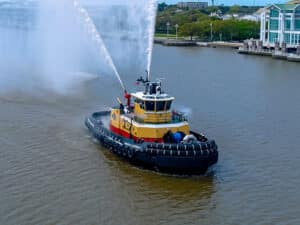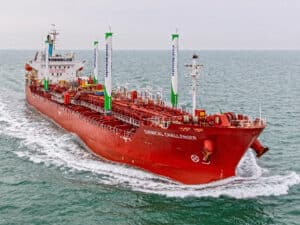
P-trap antipiracy system on show at Europort
Written by Nick Blenkey
P-trap deployed on Dockwise vessel
NOVEMBER 1, 2013 — Dutch marine safety specialist Westmark will promote its P-trap piracy anti-boarding system at this year’s Europort event in Rotterdam.
The P-Trap is a passive non-lethal self-protection measure and Westmark says that insurance companies have been open to reducing insurance premiums for vessels equipped with P-Trap as a first line of defense against piracy threats.
P-trap consists of a set of long, thin lines that can be deployed overboard to act as a barrier to prevent unidentified vessels from approaching too close. The lines are carried on side booms that can extend up to 10 meters from the ship’s bow on both sides of the ship just below the water surface. The spreading of lines as a safety zone keeps approaching vessels at a distance by jamming the propellers of boats threatening the ship.
P-Trap enables captains to keep their maximum speed and not lose 25 per cent of their own vessel speed as a result of heavy maneuvering. Westmark believes that heavy maneuvering will not be necessary under an attack. Heavy maneuvering is done to keep the attackers away from the vulnerable spots on the side of a vessel. Due to the P-Trap’s creation of a security zone, the threat of pirate vessels approaching the side of a ship is automatically mitigated.The captain will not have to focus on immediately changing its course but on the efforts of getting the crew to the mustering stations for preparation to evacuate into the Citadel.
A “weak link” in the P-Trap lines keeps the system non-lethal manner. When the pirate vessel sails into the line spread its propeller will get trapped, a weak link will activate, and the vessel is released taking the P-Trap line with it.
The P-Trap system comes in two versions applicable for almost all ship designs. The swivel boom is the most commonly applied mechanism. Swivel motion allows speedy fastening at sea when not in use. It is easily deployed by the crew prior to entering the high risk areas.
The swivel boom can be stored in the same way as storing a gangway and can be delivered in modules allowing some vessels to store the main components within the vessels’ storage lockers. The P-Trap foundation is bolted to a base plate, which is welded to the deck. The bracket mounted swivel boom can be welded to a vessel support or upper level infrastructure, depending on the vessel design.
The sliding boom version of P-Trap is designed for vessels with a forward bulkhead allowing welded installation and operation with minimum deck space required, for example, for heavy cargo and lifting vessels. The entire outboard boom can be pulled back inboard along the bulkhead.
Westmark says the patented anti-boarding solution is already installed on the special dredging and transport vessels of leading Dutch based maritime construction, transportation and installation services companies.





Leave a Reply
You must be logged in to post a comment.